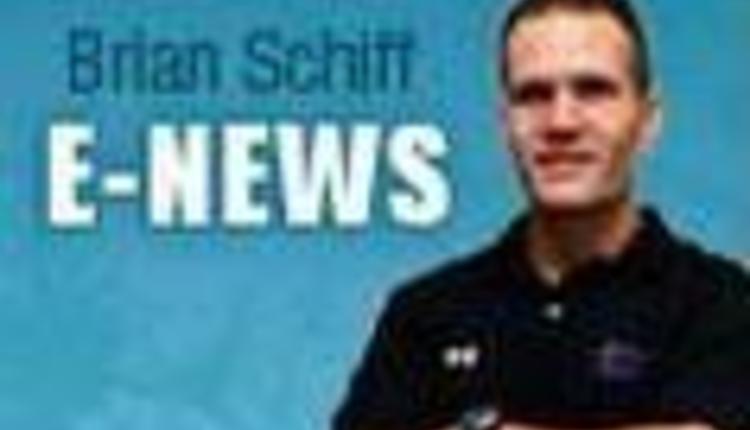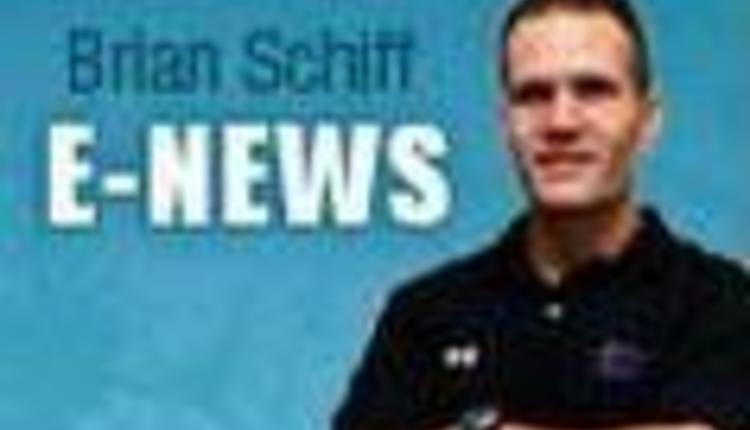BY Brian Schiff
Feb. 15 2015
I like to include some single arm dumbbell training in my rehab and performance training with my clients. This allows for observation of any frank weakness and provides an opportunity to work on eliminating... View More
BY Brian Schiff
Feb. 1 2015
Developing rotational strength and power is necessary tomaximize performance in sports. Specifically, integrating the shoulders, torso and hips in a specificmovement pattern allows for more optimal functional... View More
BY Brook Benton
Feb. 1 2015
The entrepreneurial spirit will take you on a roller coaster ride of the highest highs and the lowest lows. In February 2008, in a business session at the ECA World Fitness Conference, Michael Port gave... View More
BY Brian Schiff
Jan. 15 2015
Increasing shoulder, torso and hip strength and stability is a common training goal for athletes involved in sport. Facilitating hip disassociation and kinetic chain linking with exercise is always a plus,... View More
BY Brian Schiff
Jan. 1 2015
Developing lateral agility, foot speed and coordination are important for weekend warriors, recreational athletes and competitive athletes alike. Jumping rope is an excellent way to improve all of these... View More
BY Brian Schiff
Dec. 15 2014
The proposed benefits of self myofascial release using a foam roller are well known. Whole body vibration technology has been shown to be a useful adjunct to static stretching as well as improving stability... View More
BY Brian Schiff
Dec. 1 2014
All effective prehab and rehab programs for recreational and competitive athletes should build in single leg stability exercises. I like to use sliding exercises as one way to improve neuromuscular control... View More
BY Brian Schiff
Nov. 15 2014
Many of my athletes and clients exhibit poor hip mobility related to sitting and repetitive activity. Limited hip flexor and hamstring mobility both contribute to poor hip disassociation. One method I... View More
BY Brian Schiff
Nov. 1 2014
Shoulder pain and scapular dysfunction go hand in hand. I work with a lot of overhead athletes and pitchers. Keep in mind that throwers are expected to have some asymmetries. This exercise is an example... View More
BY Brian Schiff
Oct. 15 2014
Lateral quickness is an important part of athletic development. Having the ability to effectively decelerate and then re-accelerate the other way is critical for success in field and court sports. Incorporating... View More
BY Brian Schiff
Oct. 1 2014
Poor landing form and inadequate hip stability is a concern for many of the athletes I work with. One of the first things I like to assess is their ability to land and absorb force. You can learn a lot... View More
BY Brian Schiff
Sept. 15 2014
Core strength and stability deficits are apparent in many people. The ability to restrain movement while keeping a stable base or pillar is essential for injury prevention. Building prerequisite pillar... View More
BY Brian Schiff
Sept. 1 2014
Hip flexor tightness is a common finding in my assessments of clients. Restricted flexibility in the iliopsoas and rectus femoris restrict hip extension and create undue stress on the lumbar spine, as... View More
BY Brian Schiff
Aug. 15 2014
Increasing hip strength and stability is a common focus in training and injury prevention programs. Current research indicates hip and knee strengthening is more effective than knee strengthening alone... View More
BY Brian Schiff
Aug. 1 2014
Using a stability ball for hamstring exercises is commonplace in fitness and rehab settings. I feel the use of isometric exercise is often under rated and under utilized because it is viewed as boring... View More
BY Brian Schiff
July 15 2014
It is common to see scapular and rotator cuff dysfunction in clients. Repetitive overhead motion and certain lifts and exercises can expose the shoulder to increased strain, and muscle imbalances may further... View More
BY Brian Schiff
July 1 2014
Many people display limited thoracic spine rotation. Often, they have asymmetries based on their chosen sport or recreational activity. For rotational activities such as throwing, swimming, tennis, volleyball,... View More
BY Brian Schiff
June 15 2014
In the prior two columns, I addressed gluteal activation and overcoming TFL dominance to maximize mechanics. This exercise adds a single-leg component with external load to train the hips, core and lower... View More
BY Brian Schiff
June 1 2014
In my last column, I talked about foam rolling the TFL and how it can be synergistically dominant over the gluteus medius. This exercise addresses how to activate the gluteal muscles prior to engaging... View More
BY Brian Schiff
May 1 2014
Overhead athletes of all ages and abilities struggle with postural stability and kinetic chain energy leaks. Unfortunately, asymmetrical loading often creates unavoidable imbalances and movement compensations.... View More




















